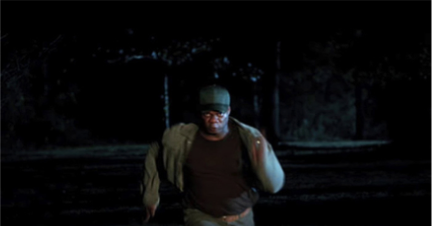By Frank Wickizer – Entertainment –
Unconventional is its most clear describing factor, even from the very first scene. In many horror movies, especially made famous by “It”, is the opening scene being a clear set up of the story and more importantly, what kind of horror is to come. This story however, has a much more confusing beginning, as the only action one sees is never seen again. This is followed by a rather random seeming title and opening credits sequence that truly seems to have no correlation to the beginning, at first watch. The opening scene that seems to be missing here is similar to the way James Bond movies were made, where a flash of action takes in the viewer. We saw it in Nightmare on Elm Street, and in Candy Man 2, and in It, and in so many other classics, so does this really have what it takes to be as good as classics like these? It is a different kind of horror, and that may be the answer to the truly unconventional nature of the film.

Photo thanks to IndieWire and Jordan Peele
There are some clever touches the film makers added to make the little details pop out of this film. For example, the character from the intro, Chris Washington, played by Daniel Kaluuya is next seen shaving, using bright white shaving cream to highlight his darker skin tone, and the cut he receives almost sends home the message right there that his blood, no matter his skin color is the same as anyone else’s. Another example is the establishment at the very beginning of the film, that voting for President Barack Obama does not mean you are not racist, seeing as Washington’s character is not is still unsure about visiting his girlfriend’s parents after he learns that they “aren’t racist” because her dad “would’ve voted for Obama a third time if he could’ve”. This film really hits home fast to many white liberals such as myself fast, as it shows just how far away from truly understanding the bounds of prejudice many are.
One part I wish that Jordan Peele, the director had made more prolific in the scene with the police is the issue of police brutality, of course, being a horror movie, graphic content is not something he would have to hold back on, so I wonder why they didn’t play with the imagery of the situation. Simply making the officer more pushy about the issue of seeing Kaluuya’s character’s I.D. would’ve made the theme of the situation more understandable. While it was lacking was true links to police brutality, leader of the LHS branch of the NAACP, Maia Ramsey, explained to me, “Get Out is about micro-aggressions more than anything.” This means it’s more about prejudices and how they affect individuals on levels lower that direct violence, but also in terms of psychological violence.
What really matters with a horror movie, though, is how it affects the audience, and this is where Get Out shines. Not only is it at least plausible, the cinematography makes it seem ever more real, as one feels as though they are really a part of the story. Psychological violence experienced in micro-aggressions draw an interesting parallel
here, as one experiences a similar sense of fear from the movie itself. The plausibility of this storyline makes it even scarier, as Psychology teacher Lindsay Herting explained, “The realistic- ness means that one is more likely to have a prolonged sense of fear.” She went on to explain that, “certain situations that are even close to similar can trigger the same response.” Junior Malcolm Oppoku said, “As a Black male, this story made a lot
of sense, and when I’m in situations where things seem even slightly sketch, I get stressed out, and sometimes even think about what happened in the movie.”
Another effect this movie has had on its audience is the “Get Out Challenge” where one of the best moments of cinematography is captured. Kaluuya’s character steps out to smoke a cigarette, when the Black groundskeeper, Walter, of the Armitage’s estate begins to run right at him. The important moment comes right when he gets close enough to make eye contact with the viewer, right before he is about to hit the cam- era, he darts to the left of the screen. This inspired the social media viral challenge, titled the “Get Out Challenge”. Many took part, from Kaluuya himself to people here at LHS. This effect on social media shows just how well loved this movie became.
In this regard, I give this movie an 8/10 for the cinematography and its ability to reach its audience. As a movie compared to just other horror movies, I would have to give this film at least an 8.5/10, as it is much more established themes and a more nuanced and politically relevant storyline that is approachable and very watchable from many different positions. This watch- ability really helps to boost its rating, as most anyone can be at least entertained by this movie, from the truly naive that believe this is just another horror movie, to white activists that see the liberatory potential of this film, to people of color that might finally feel represented in the horror genre.
